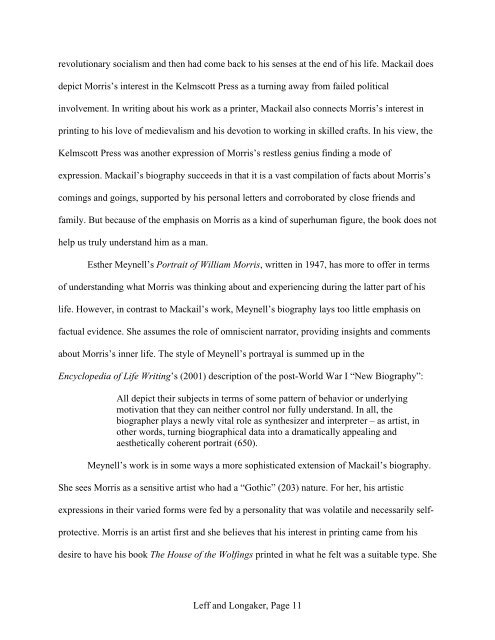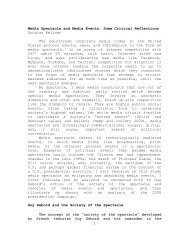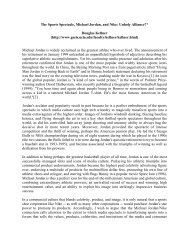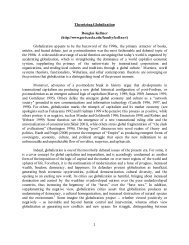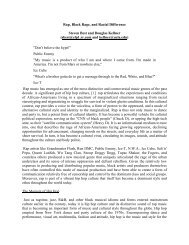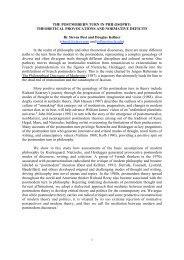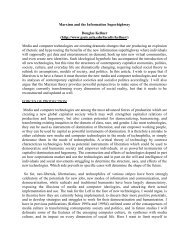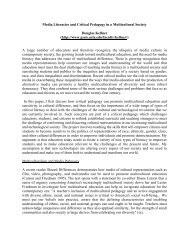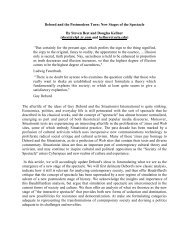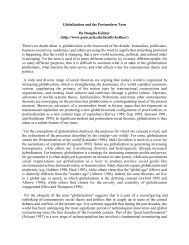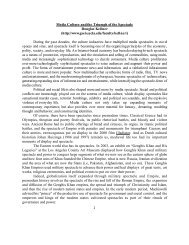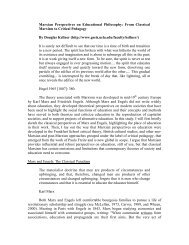Rachel Leff and Rachel Longaker IS281 Professor Maack ... - Ucla
Rachel Leff and Rachel Longaker IS281 Professor Maack ... - Ucla
Rachel Leff and Rachel Longaker IS281 Professor Maack ... - Ucla
Create successful ePaper yourself
Turn your PDF publications into a flip-book with our unique Google optimized e-Paper software.
evolutionary socialism <strong>and</strong> then had come back to his senses at the end of his life. Mackail does<br />
depict Morris’s interest in the Kelmscott Press as a turning away from failed political<br />
involvement. In writing about his work as a printer, Mackail also connects Morris’s interest in<br />
printing to his love of medievalism <strong>and</strong> his devotion to working in skilled crafts. In his view, the<br />
Kelmscott Press was another expression of Morris’s restless genius finding a mode of<br />
expression. Mackail’s biography succeeds in that it is a vast compilation of facts about Morris’s<br />
comings <strong>and</strong> goings, supported by his personal letters <strong>and</strong> corroborated by close friends <strong>and</strong><br />
family. But because of the emphasis on Morris as a kind of superhuman figure, the book does not<br />
help us truly underst<strong>and</strong> him as a man.<br />
Esther Meynell’s Portrait of William Morris, written in 1947, has more to offer in terms<br />
of underst<strong>and</strong>ing what Morris was thinking about <strong>and</strong> experiencing during the latter part of his<br />
life. However, in contrast to Mackail’s work, Meynell’s biography lays too little emphasis on<br />
factual evidence. She assumes the role of omniscient narrator, providing insights <strong>and</strong> comments<br />
about Morris’s inner life. The style of Meynell’s portrayal is summed up in the<br />
Encyclopedia of Life Writing’s (2001) description of the post-World War I “New Biography”:<br />
All depict their subjects in terms of some pattern of behavior or underlying<br />
motivation that they can neither control nor fully underst<strong>and</strong>. In all, the<br />
biographer plays a newly vital role as synthesizer <strong>and</strong> interpreter – as artist, in<br />
other words, turning biographical data into a dramatically appealing <strong>and</strong><br />
aesthetically coherent portrait (650).<br />
Meynell’s work is in some ways a more sophisticated extension of Mackail’s biography.<br />
She sees Morris as a sensitive artist who had a “Gothic” (203) nature. For her, his artistic<br />
expressions in their varied forms were fed by a personality that was volatile <strong>and</strong> necessarily self-<br />
protective. Morris is an artist first <strong>and</strong> she believes that his interest in printing came from his<br />
desire to have his book The House of the Wolfings printed in what he felt was a suitable type. She<br />
<strong>Leff</strong> <strong>and</strong> <strong>Longaker</strong>, Page 11


